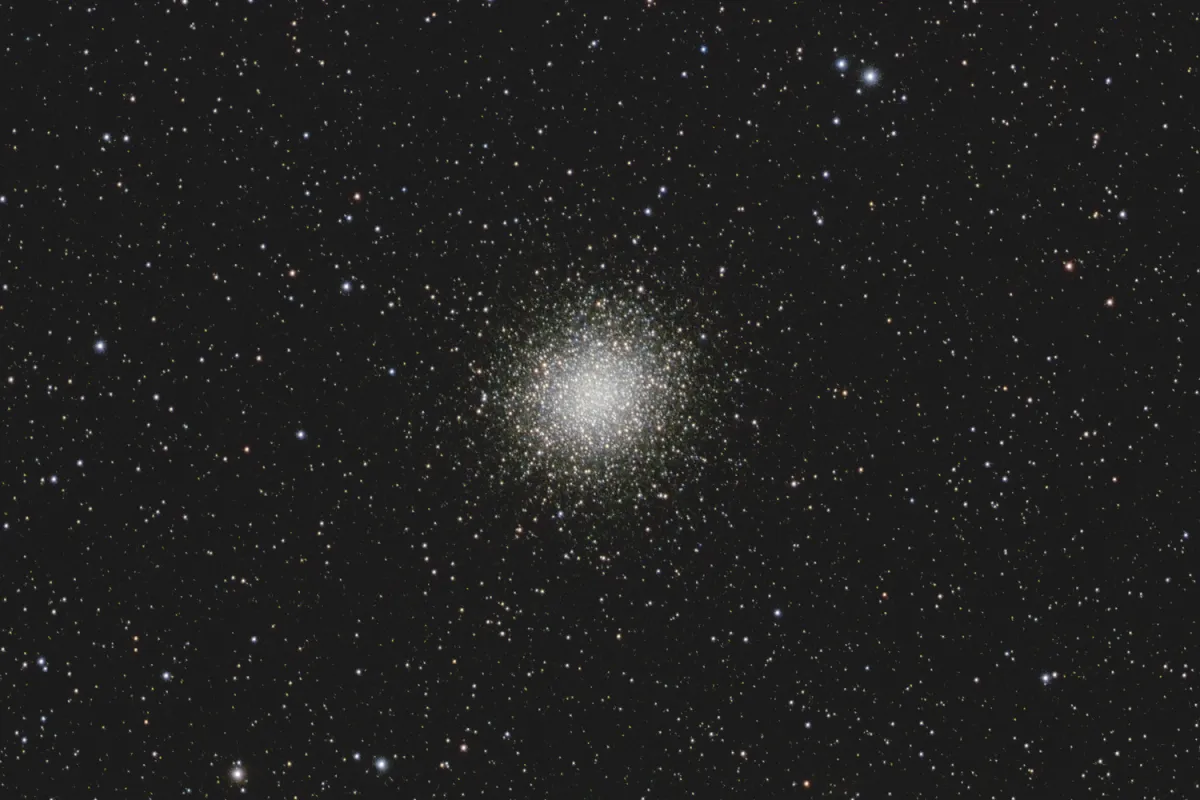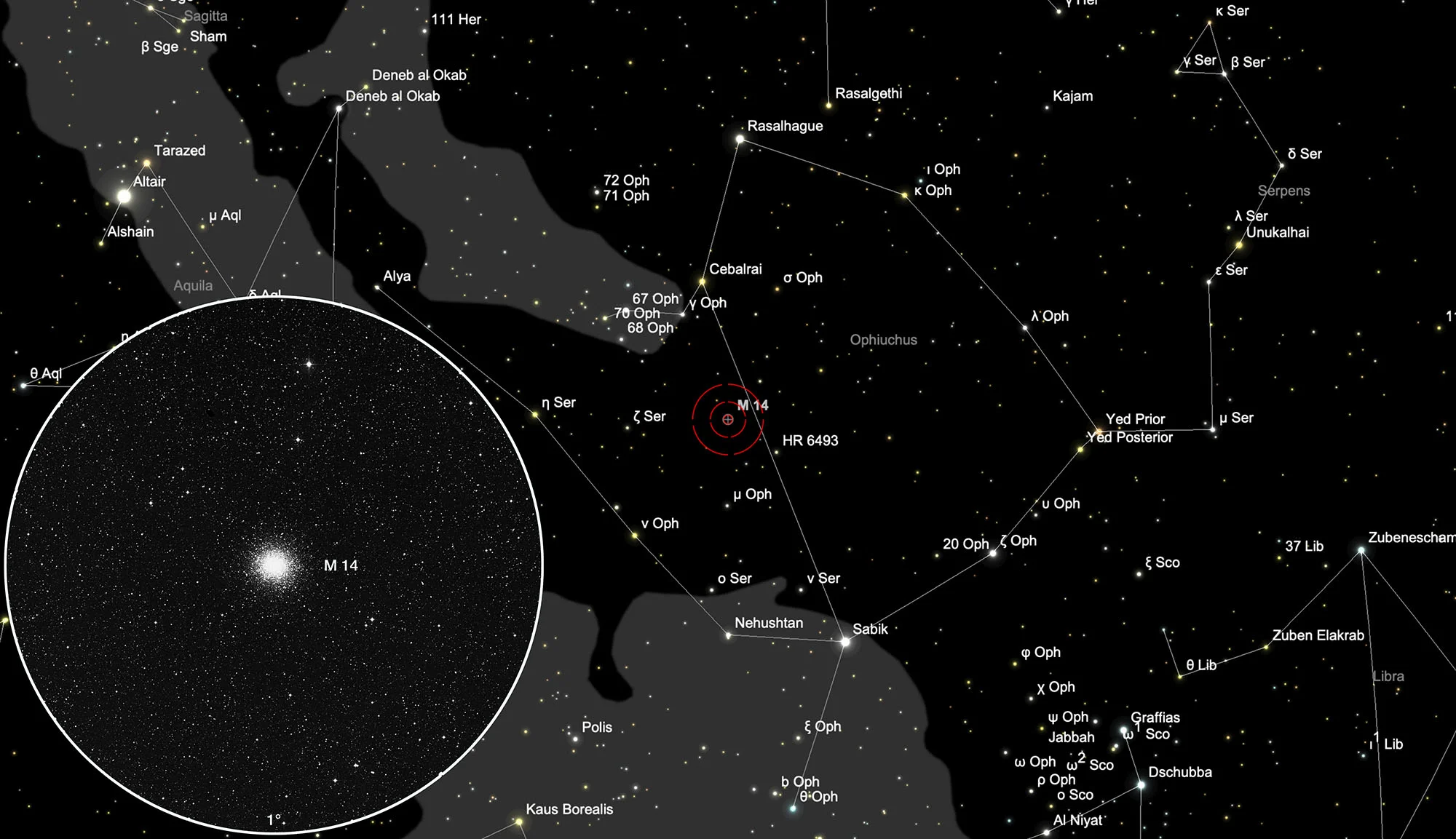Globular Cluster Messier 14

History
This globular cluster was discovered by Charles Messier on 1 June 1764. He listed it as 14th entry and described it with the following words: «Starless nebula, discovered in the drapery that passes through the right arm of Ophiuchus, and placed on the parallel of ζ Serpentis: this nebula is not large, its light is faint, yet it can be seen with an ordinary telescope of three and a half feet; it is round, and near it is a small star of the ninth magnitude; its position was determined by comparing it to γ Ophiuchi, and Mr. Messier reported its position on the Map of the Comet of 1769. Memoirs of the Academy, year 1775, plate IX. Reviewed on March 22, 1781.» [281]
About two decades later Sir William Herschel observed the objects found Messier and recognized the true nature of many of these «nebulae». He wrote: «The excellent collection of nebulae and clusters of stars which has lately been given in the Connoissance des Temps for 1783 and 1784, leads me next to a subject which, indeed, must open a view of the heavens. As soon as the first of these volumes came to my hands, I applied my former 20-feet reflector of 12 inches aperture to them; and saw, with the greatest pleasure, that most of the nebulae, which I had an opportunity of examining in proper situations, yielded to the force of light and power, and were resolved into stars. For instance the 2d, 5, 6, 10, 12, 13, 14, 15, 16, 19, 22, 24, 28, 30, 31, 37, 51, 52, 53, 55, 56, 62, 65, 66, 67, 71, 72, 74, 92, all which are said to be nebulae without stars, have either plainly appeared to be noting but stars, or at least to contain stars, and to shew every other indication of consisting of them entirely.» [27]
Physical Properties
M 14 belongs to those globular clusters that do not have a sharply defined central compression. The brightness curve extends gently over the entire pane and drops continuously at the outer edges. The integrated spectral type is given as G0 and the distance as about 70'000 light years, but this value still needs a large correction due to the dusty region of the Milky Way, which is in the line of sight to M14. The cluster shows a radial speed of 130 km/s in our direction [4]
| Designation | NGC 6402 |
| Type | GCL (VIII) |
| Right Ascension (J2000.0) | 17h 37m 36.1s |
| Declination (J2000.0) | -03° 14' 43" |
| Diameter | 11 arcmin |
| Visual magnitude | 7.6 mag |
| Metric Distance | 9.300 kpc |
| Dreyer Description | ! globular, B, vL, R, eRi, vgmbM, rrr, st 15 |
| Identification, Remarks | h 1983=3698; GC 4315; M 14; GCL 72 |
Finder Chart
The globular cluster Messier 14 is located in the constellation Ophiuchus (Serpent Bearer). The best observation time is February to November.
Visual Observation
400 mm Aperture: The globular cluster M 14 is not easy to find, especially when the sky is so milky and bright that you can barely make out the stars of the Serpent Bearer, but once you find it in the 21 mm Ethos eyepiece, you are rewarded for your search with beautifully resolved stars all the way to the core region. With increasing magnification, more stars become visible in the core region. — 400 mm f/4.5 Taurus Dobsonian, Glaubenberg, 17. 6. 2023, Bernd Nies
